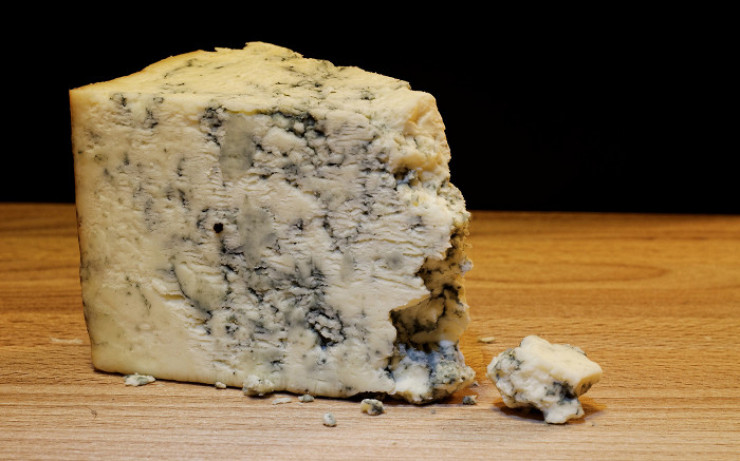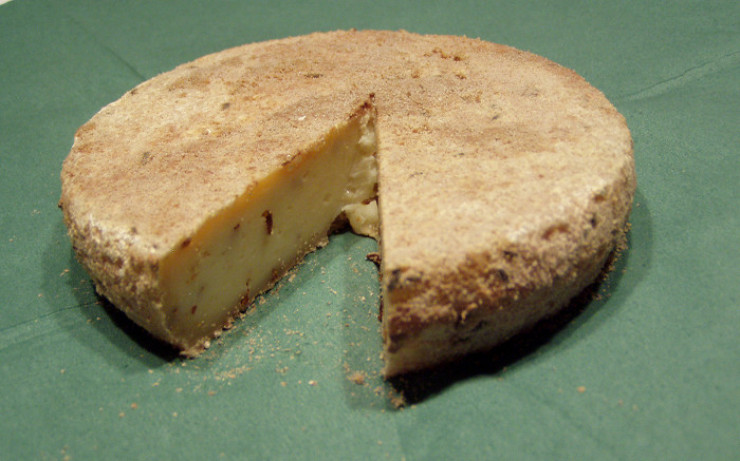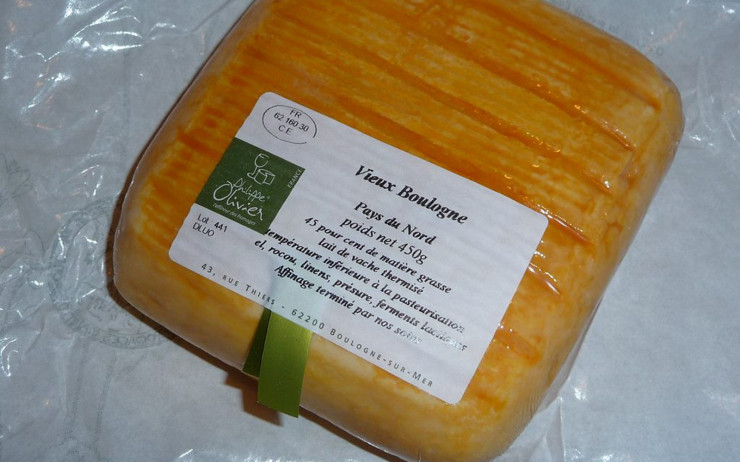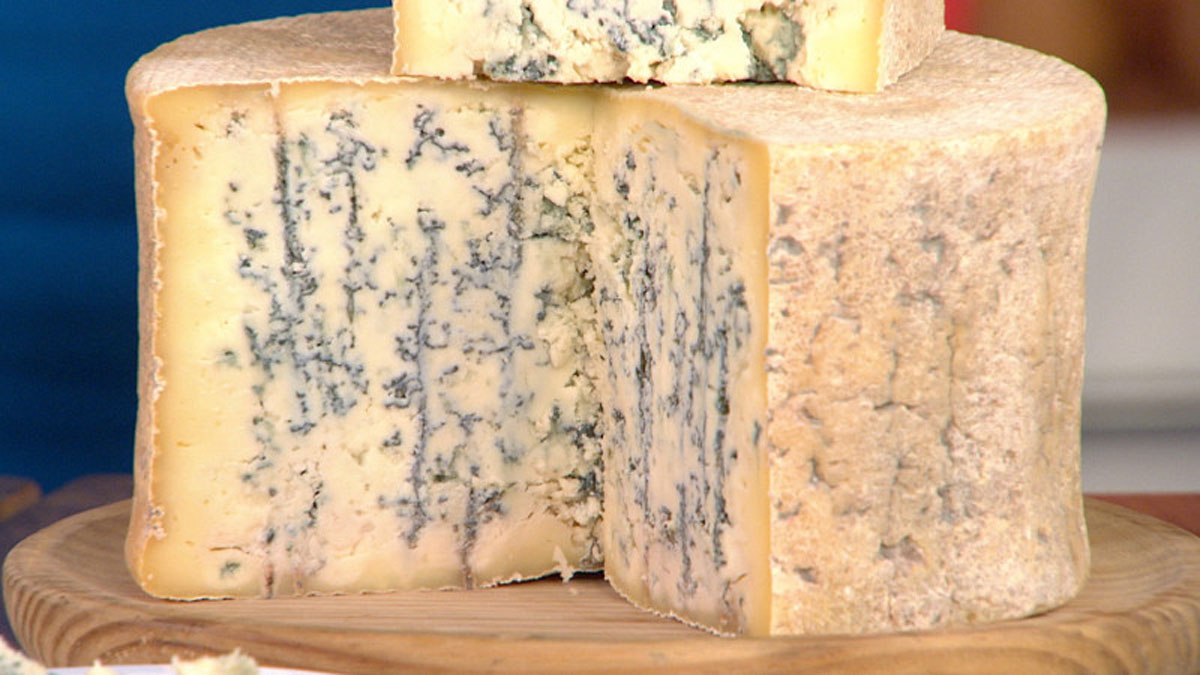Today, more than 2,000 varieties of cheese are produced in the world, and among them, there are many varieties with a repulsive appearance, unpleasant aroma, and unexpected ingredients. True, such an unattractive shell sometimes hides a very refined taste, and connoisseurs are ready to shell out a lot of money for these strange delicacies.
5. Roquefort: classic green mold
Roquefort is one of the most famous blue cheeses: its white, crumbly flesh is decorated with a pattern of mold, which gives it a specific taste and smell. In each piece, a sweetish oily aftertaste and smoky aroma are felt, and mold streaks add spice.
A real Roquefort is considered the only one that is produced in the historical region of Rouergues in the south of France, where the technology for its manufacture was born. Sheep’s cheese matures in limestone caves, due to which mold forms in it. A kilogram of the finished product costs about 50 euros.

4 Fetid Bishop: Subtle Sock Scent
English cheese with a speaking name is one of the oldest in the world: Cistercian monks made it from the milk of Gloucester cows as early as the 10th century.
Strange as it may seem, it owes its pungent smell, reminiscent of the fragrance of stale socks, to pears, the “fetid bishop” variety. When ripe, the cheese is occasionally dipped in pear cider, which causes it to turn orange, sticky, and smelly.
However, it is not difficult to get rid of an unpleasant aroma: it is enough to remove the crust from the cheese, then you can appreciate its delicate sweetish taste. The foul-smelling Bishop pairs well with red wines and fruit and costs around 28 euros.

3. Milbenkese: tart aftertaste and live mites
In the German village of Wurchwitz, tick cheese has been made for 300 years – this is how the word milbenkese is translated into Russian. Instead of lactic acid bacteria, cheese mites are used in its production, the enzymes of which ensure the maturation of the product. The formed cheese is placed in a wooden box and sprinkled with ticks: about half a million of these arthropods, 0.3 millimeters in size, settle in each cheese head. Ripening, milbenkese acquires a dark color, a bitter aftertaste, and the smell of ammonia. Cheese is eaten with live ticks.
By the end of the 20th century, the tradition of production was almost lost, but it was successfully revived, and in Wurchwitz they even erected a marble monument to a very frightening cheese mite.

2. Vieux Boulogne: exquisite notes of rotten meat
The title of cheese with the strongest and most disgusting smell in the world has rightfully earned the French variety Vie Boulogne. This soft cheese from the town of Boulogne-sur-Mer exudes a complex bouquet of rotten vegetables, rotten fish, dampness, and manure, all because it is aged in damp cellars and washed with beer during the maturation process. Despite the unpleasant amber, gourmets appreciate Vie Boulogne for its mild taste with a hint of mushrooms. It is advised to use it with bread or cookies, washed down with beer, champagne, or red wine.

1. Kazu Marzu: a national treasure
The rating cannot do without the legendary delicacy from Sardinia. Everything is perfect in it: a putrid smell, jumping worms, and a price of 200 euros per kilo. You can’t find Kazu mirza in stores, only in the market or at local cheese makers. It is listed in the Guinness Book of Records as the most dangerous cheese in the world, and until 2010 its sale in Italy was banned. True, then the ban was lifted, recognizing the “rotten cheese” as a cultural heritage of Sardinia.
The repulsive aroma and burning taste are the results of the decomposition of pecorino cheese, which is accelerated by the larvae of the cheese fly. It is believed that Kazu marz should be eaten while the larvae are still alive: when they die, they make an already dubious product frankly toxic.

